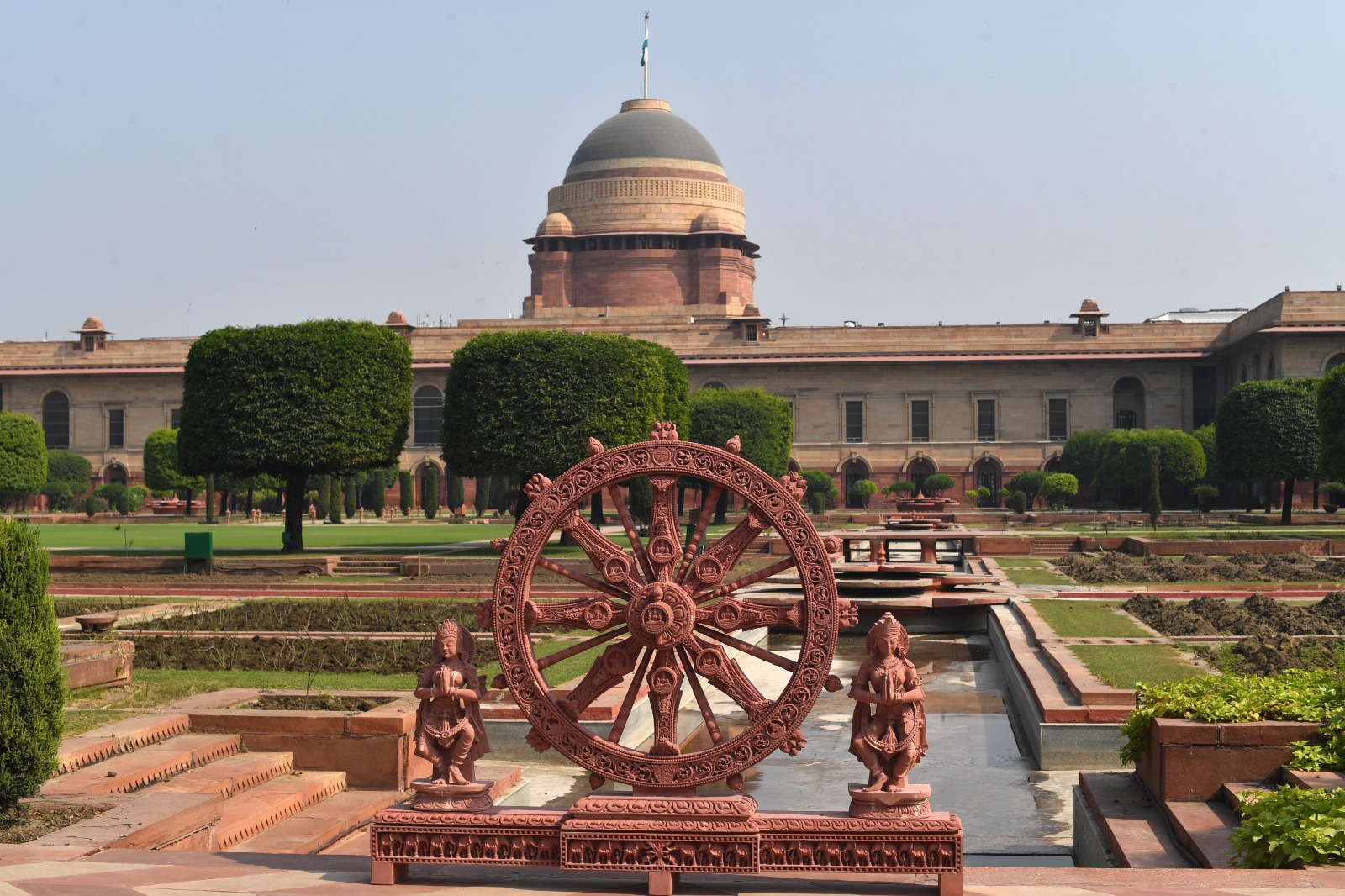Replicas of Konark Wheels at Rashtrapati Bhavan

- 30 Oct 2024
In News:
- Four replicas of the Konark wheels, made of sandstone, have been installed at the Rashtrapati Bhavan Cultural Centre and Amrit Udyan.
- This initiative is aimed at showcasing India’s rich cultural heritage and promoting traditional historical elements among visitors to Rashtrapati Bhavan.
Significance of the Konark Sun Temple:
- Historical Background: The Konark Sun Temple was built in the 13th century under King Narasimhadeva I of the Eastern Ganga Dynasty in Konark, Odisha.
- Architectural Design: The temple is a colossal stone chariot with twelve pairs of intricately carved wheels, symbolizing the chariot of the Sun God.
- Materials Used: Constructed using Khondalite stones, the temple features detailed carvings that depict mythology and cultural life.
- Astronomical Significance: The temple's orientation is designed to capture the first light of the sun, reflecting ancient Indian knowledge of astronomy.
- UNESCO World Heritage Status: The Konark Sun Temple was declared a UNESCO World Heritage Site in 1984, recognizing its architectural and historical importance.
Symbolism of the Konark Wheel:
- Time and Progression: The Konark wheel represents time (Kalachakra), progression, and democracy. Its 24 spokes symbolize ancient Indian wisdom and the passage of time.
- Sundial Function: The wheel was historically used as a sundial in the temple, marking the passage of time and symbolizing India’s commitment to progress and resilience.
- National Emblem: The Konark wheel's design is also reflected in the Ashoka Chakra, the wheel on the national flag of India, symbolizing the nation’s resolve towards progress.
Cultural Heritage at Rashtrapati Bhavan:
- The installation of these replicas is part of a broader effort to introduce and promote traditional cultural and historical elements at Rashtrapati Bhavan.
- The Rashtrapati Bhavan Cultural Centre and Amrit Udyan serve as platforms to exhibit India’s diverse artistic legacy to visitors, allowing them to experience the grandeur of ancient Indian architecture and its cultural significance.
